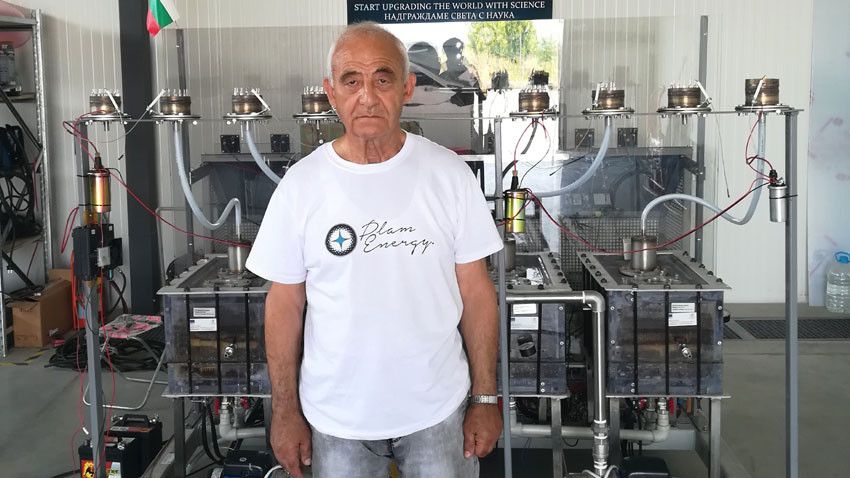"Created from water and turned again to water, producing clean energy” is the way Bulgarian Ilia Valkov described the so-called Brown’s gas. He is known as Australian scientist Yull Brown because he immigrated to Australia in the middle of the 20th century. There in the 1970s he was experimenting with producing oxyhydrogen from water through electrolysis, separating the water molecule into a mixture of hydrogen and oxygen at a ratio of 2:1. This gas mixture is also known as Brown’s gas and when ignited, it converts to water vapor and releases energy. The scientist, however, claimed to have found a method to use implosion characteristics of the gas for producing energy. The scientific community remained skeptical to these claims that contradict laws of thermodynamics and chemistry. Still, Brown’s gas has a number of applications and is used for metal cutting and welding.
Two Bulgarian scientists have recently developed and patented an installation for extraction of Brown’s gas and mineral deposits from seawater. With their project, funded under the "Innovation and Competitiveness" Operational Program in Bulgaria, engineers Chavdar Kamenarov and Plamen Kamenarov have achieved success in the field of renewable energy sources:

“Initially our goal was extracting energy from water, but in the process it turned out that extracted mineral deposits are more valuable than the gas itself,” engineer Chavdar Kamenarov says. "So, instead of getting energy, we received mineral resources. This is how the idea to use the gas in the process of extraction of minerals was born. We obtain these minerals in the form of sludge, extremely rich in polymetals.”
The interesting thing here is that the technology allows selective accumulation of certain metals at the expense of others. Another great advantage is that the technology does not pollute the environment but actually can be used to purify highly polluted industrial waters:
“In addition to extraction of mineral resources, clean drinkable water can be extracted from the sea,” Kamenarov continues. “At a later stage, the technology can be used as an installation for incinerating household waste and converting it into thermal or electrical energy. The very presence of Brown’s gas reduces toxicity but does not remove it completely and construction of air purification installations is required. In addition to the listed applications, the installation we have created can also be used for cleaning tailings ponds where extremely harmful radioactive waste is accumulated. Brown’s gas is successfully used in China to neutralize waste from nuclear power plants.”
At the end of September the invention will be presented in Plovdiv to the scientific community and industry representatives.
English: Alexander Markov
Photos: private library
Interest in the exhibitions and events at the Regional History Museum in Ruse on the Danube is growing. In the last 12 months, it had 95 966 visitors, which is 5 209 more people than in 2023, which is more than in the pre-pandemic years, the institution..
Aleksandar Vučić offers the opposition an advisory referendum on his presidency Serbs do not believe that the solution to the political crisis in the country could be an "advisory referendum" on confidence in the president, as requested by the..
Methodological assistance, teacher training, meetings and educational programs in Bulgarian language and culture for students – these are just some of the ways in which the academic community of Veliko Tarnovo University "St. Cyril and Methodius" reaches..
“On 13 February this year, Bulgarian consumers must not shop at any of the grocery stores, at any of the chain stores, at any of the supermarkets!..
World Radio Day - 13 February, this year is dedicated to climate change. The choice is no coincidence—2025 has been identified by the Paris Agreement as a..

+359 2 9336 661
